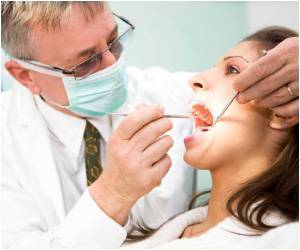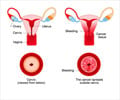Although they are at higher risk for cervical cancer, girls from low-income families are less likely to receive the human papillomavirus (HPV) vaccine that prevents

"HPV vaccination is one of the few tools we have that actually protects against cancer, so it's important to get girls vaccinated before they become sexually active and are exposed to the virus," said Sean O'Leary, MD, MPH, an investigator at Children's Outcomes Research Program, which is affiliated with Children's Hospital Colorado and the University of Colorado School of Medicine, Aurora. "The reasons low-income girls did not initiate or complete HPV vaccination were strikingly different depending on whether their parents spoke English or Spanish. This insight should be helpful to health educators and policymakers as they seek ways to improve vaccination rates."
HPV is the most common sexually transmitted infection in the United States. While some people clear the infection on their own, in other cases it can cause cancer of the genital area or throat, as well as genital warts. About 12,000 U.S. women are diagnosed every year with cervical cancer, the most common HPV-caused cancer. The vaccine targets the types of HPV that cause the vast majority of cervical cancers in the United States. Once a person is exposed to HPV, the vaccine is not as effective, which is why the Food and Drug Administration (FDA) recommends it be given to girls and boys ages 11-12, before they become sexually active.
The HPV vaccine is given in three doses over six months. Overall, about 33 percent of girls have had all three doses of the vaccine, but only 28 percent of girls below the poverty level have had all three doses, according to the Centers for Disease Control and Prevention (CDC). Studies show certain populations, including those living below the poverty line, have higher rates of cervical cancer.
The study included interviews with 41 low-income parents of girls ages 12-15 to learn why they had either not initiated or not completed the HPV vaccine series. Of those, 30 were interviewed by phone for 25-40 minutes, including: 10 English-speaking and 10 Spanish-speaking parents whose daughters had not completed the vaccine series, and 10 Spanish-speaking parents whose daughters had not initiated the vaccine. The remaining 11 English-speaking parents of girls who had not initiated the vaccine participated in a two-hour focus group.
The findings suggest low-income parents may be targeted differently depending on whether they are Spanish- or English-speaking, said Dr. O'Leary. For example, many Spanish-speaking parents whose daughters had not completed the series said they didn't realize the girls had to get three shots to complete the series. A reminder system that includes providing the information in Spanish could help in those cases, he notes. For English-speaking parents, discussing the vaccine's safety record might be beneficial.
Advertisement
Source-Eurekalert













